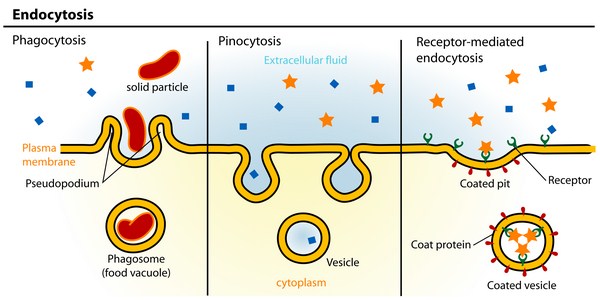
The uptake of molecules into the cell occurs by a process called endocytosis. The molecule at first fuses with the cell membrane and invaginates.The invagination is separated from the cell membrane and becomes a vesicle.
If fluid with the dissolved substances are engulfed into the cell, it is pinocytosis and the vesicle inside the cell is called pinocytic vesicle. If particulate matter and bacteria are engulfed into the cell, it is known as phagocytosis. The vesicle inside the cell forms the phagosome.
In pinocytosis, the substances that are taken in to the cell include insulin, viruses, growth factors and low density lipoproteins. The process is mediated through receptors present on the cell surface. They are also other proteins namely clathrin, actin and myocin present beneath the receptors, which help the pinocytic vesicle to pinch off from the cell membrane. The process of endocytosis requires the supply of ATP as it is an active process. During endocytosis process a part of the cell membrane is removed which is compensated by the addition of membrane to the cell surface during exocytosis when the secretory vesicle fuses with the cell membrane. This explains how the surface area of the cell membrane remains constant when these processes occur.
Source: Textbook of Physiology, 3E (Chandramouli) (2010)